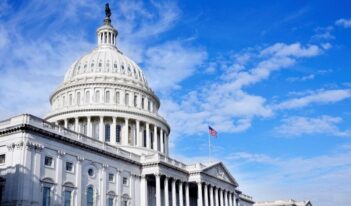
Scholars caution against using the Right to Try Act to skirt regulation for regenerative therapies.
In the two years since he was diagnosed with a severe disease attacking his nervous system, Frank Mongiello reportedly lost the ability to perform everyday activities. Even still, he was hopeful he could improve the quality of his life if he could just get access to an experimental medical treatment that would use his own cells to fight the disease. But the biomedical company that could provide him with the treatment reportedly denied Mongiello access to it because the treatment had yet to complete all the testing required by the U.S. Food and Drug Administration (FDA).
Stories like Mongiello’s have gained media attention and public support in recent years, ultimately leading Congress to adopt The Right to Try Act of 2017. This federal law now allows anyone who has been diagnosed with a life-threatening disease and has exhausted all treatment options to access a treatment that has completed just the first phase of required testing—provided both the physician and manufacturer approve the use.
Although advocates for terminally ill patients favor the new law’s “right to try,” three legal scholars have recently cautioned against its use to allow patients access to investigational treatments that have not been subject to formal FDA approval programs.
In their article critiquing the “right to try,” Christine Coughlin, Nancy King, and Melissa McKinney of Wake Forest University Law School do recognize how appealing the right-to-try legislation is for terminally ill patients seeking regenerative medicine, in particular. Regenerative therapies rely on the patient’s own tissues and organs to create, in effect, a type of customized medical treatment. If patients using regenerative therapies can exercise a right to try, they can access custom treatments without worrying about the long wait for formal approval procedures, Coughlin and her coauthors say.
Because patients are likely to use the Right to Try Act to access regenerative therapies, Coughlin and her coauthors use regenerative medicine as a reference for examining the legal and economic ramifications—as well as patient safety concerns—of patients relying on the act to bypass the traditional regulatory framework.
They argue one significant concern is that by eliminating the rigorous testing performed in the second and third phases of trials, the Right to Try Act goes against FDA’s role to “protect the public.” Without data from the extensive studies required by FDA, patients risk using treatments that accelerate death or worsen their medical conditions.
Patients may also spend their resources on unproven treatments that do not alleviate symptoms instead of seeking care that could reduce pain and improve quality of life, Coughlin and her coauthors explain.
The law also implicates broader public health concerns by reducing FDA’s regulatory authority, limiting the use of clinical trials, and increasing health disparities, according to Coughlin and her coauthors. They suggest that the legislation reduces FDA’s regulatory authority by providing an alternative pathway to get a treatment approved. This act could be a first step in narrowing the agency’s overall scope of regulatory power, they explain. Furthermore, Coughlin and her coauthors argue that if such laws were to reduce FDA’s authority, developments in research and treatment options would likely be slowed by the lack of oversight.
The right-to-try law may be motivated by good intentions, but it will limit researchers’ ability to collect useful information from clinical trials by reducing the enrollment size of the trials, say Coughlin and her coauthors. Researchers use clinical trials as a method to gather data about a treatment’s effectiveness and safety. But in order to collect generalizable information, researchers need to have enough participants enrolled in the trial.
When it comes to diseases that might require treatment by regenerative medicine, the eligible populations of patients will already be quite small and many patients who are eligible may not want to participate out of fear that they will receive the placebo or standard course of treatment. Coughlin and her coauthors warn that allowing patients to access highly experimental treatment could further detract from clinical trials by creating a pathway where patients are guaranteed access to experimental drugs and therapies. If patients use the Right to Try Act to bypass clinical trials, fewer trials may continue through all phases, resulting in the production of less reliable information about the treatment’s safety and effectiveness.
Coughlin and her coauthors explain that “when desperate patients and willing physicians seek access that can entirely circumvent regulatory oversight, it is difficult to envision how to keep any form of the clinical trial process intact and functioning well enough to gather generalizable data.”
The Right to Try Act also exacerbates existing health care disparities by providing treatment opportunities only to those who have the necessary resources, argue Coughlin and her coauthors. The Right to Try Act allows manufacturers to charge patients directly for the cost of providing the treatment. Many of these treatments reportedly cost more than $100,000 per year and require lifelong administration. As a result, the right-to-try law will mainly help wealthy patients and those who can successfully leverage media coverage to gather financial support or pressure manufacturers into providing treatment.
Of course, manufacturers, could decide to cover the costs for a patient’s treatment, but that only presents manufacturers with an economic dilemma, say Coughlin and her coauthors. Manufacturers could charge patients at the risk of creating a backlash for denying care to those terminally ill patients who cannot afford to pay. Or if manufacturers cover the cost of the treatment, the expenses may reduce the firm’s financial ability to get other treatments on the market.
Although Coughlin and her coauthors recognize that moving quickly to provide access to care can give hope to needy patients seeking a last chance at treatment, they caution bypassing the established regulatory framework because of patient safety, public health, and economic concerns.



